
George William Frederick Howard, 7th Earl of Carlisle,, styled Viscount Morpeth from 1825 to 1848, was a British statesman, orator, and writer.
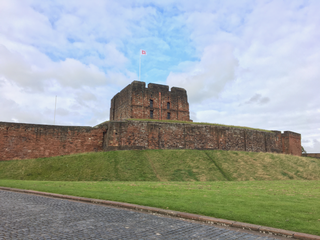
Carlisle Castle is a stone keep medieval fortress located in the city of Carlisle near the ruins of Hadrian's Wall. First built during the reign of William II in 1092 and rebuilt in stone under Henry I in 1122, the castle is over 930 years old and has been the scene of many episodes in British history.

Charles Howard, 3rd Earl of Carlisle, PC was a British nobleman, peer, and statesman.

Hesket is a large civil parish in the Westmorland and Furness unitary district of Cumbria, England, on the main A6 between Carlisle and Penrith. At the 2001 census it had a population of 2,363, increasing to 2,588 at the 2011 census, and estimated at 2,774 in 2019. The parish was formed in 1894 with the passing of the Local Government Act 1894 and was enlarged to incorporate the parish of Plumpton Wall following a County Review Order in 1934. Hesket is part of the historic royal hunting ground of Inglewood Forest. Settlement in the parish dates back to the Roman occupation.
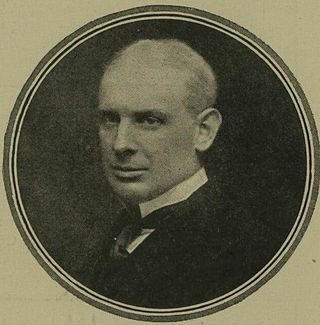
Charles James Stanley Howard, 10th Earl of Carlisle, DL, styled Viscount Morpeth from 1889 to 1911, was a British soldier, peer, and Liberal Unionist politician.
Edward Howard, 2nd Earl of Carlisle, known as Viscount Morpeth from 1661 to 1685, was an English Whig politician.
The high sheriff is the oldest secular office under the Crown. Formerly the high sheriff was the principal law enforcement officer in the county but over the centuries most of the responsibilities associated with the post have been transferred elsewhere or are now defunct, so that its functions are now largely ceremonial. The high sheriff changes every April.
The Hon. William Howard was an English politician who was a Conservative Member of Parliament for Morpeth (1806–32) and Sutherland (1837–40).
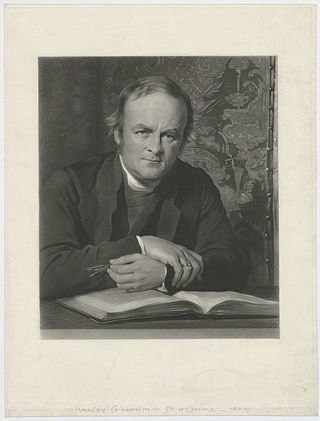
Harvey Goodwin was an English academic and Anglican clergyman, who was Bishop of Carlisle from 1869 until his death.

Hoole Hall is a former country house located to the north of Chester, Cheshire, England. It originated as a small house in about 1760, built for the Rev John Baldwin. After Rev Baldwin's death in 1793, the house passed to his eldest son, Thomas Baldwin, who then sold the house and surrounding land in 1800.

Hardwick Hall in Sedgefield, County Durham is a building of historical significance and is a Grade II listed building on the English Heritage Register. A major part of it was built in the late 1700s but it is possible that some of it dates from about 1634. It was the residence for many notable people for two centuries. It is now a hotel which provides accommodation and restaurant services and caters for special events particularly weddings.
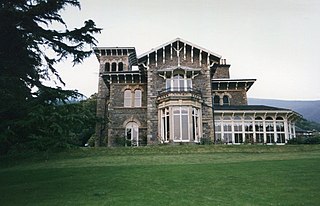
Underscar Manor is a country house at Underskiddaw in Cumbria. It is a Grade II listed building.

Esthwaite Lodge is a 19th-century house in Hawkshead, Cumbria, England; it is a Grade II listed building.
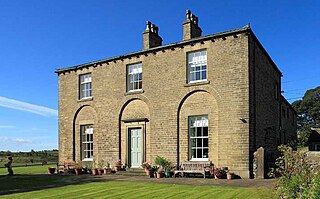
Newton Grange in Bank Newton, Skipton, in Yorkshire is a Georgian house of historical significance and is Grade II listed on the English Heritage Register. It was built in about 1800 by Richard Greenwood, a gentleman, and was the private residence for many notable families. It is now a wedding venue and provides holiday cottage accommodation.
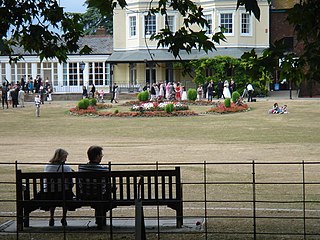
Court Garden in Marlow, Buckinghamshire, England, is a Grade II* listed building on the National Heritage List for England. It was built as a house in about 1758 by Dr William Battie, an eminent physician. It was sold in 1776 to Richard Davenport and remained in the Davenport family until 1894. It was then sold and became the home of the Griffin family for the next thirty years. The house and gardens were bought by public subscription in 1926, with the grounds being made a public park called Higginson Park. Since 1934 the house itself has served as council offices and as a venue for special events.
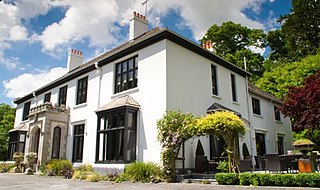
Glazebrook House is a building of historical significance in South Brent, Devon. Part of the house was built in about 1650 and was successively added to until it became the present structure. It was the residence of several notable people until 1972 when it was converted to a hotel. Today it is still a hotel which provides accommodation and restaurant facilities and caters for special events.

Northaw Place is a Grade II* listed former mansion house, later a school and children's home, in Northaw and Cuffley, Hertfordshire, England. Northaw Place was built circa 1690 by Sir George Hutchins, King's Serjeant and one of the Commissioners of the Great Seal. Cussans describes the Northaw estate as having once formed part of the manorial estate but it became detached from it in circa 1690 when Sir William Leman, second Baronet, and Lord of the Manor of Northaw, gave it to his daughter Sarah, on her marriage to Sir George Hutchins. It remained in private hands until the late 19th century, when it was converted into a school. It reverted to private ownership again in 1927, only to be purchased by Middlesex County Council after World War II and converted into a children's home. With the 1974 re-organisation of UK local government it passed to the London Borough of Haringey who used it as a Children's Assessment Centre until late 1979. In 1980 a planning application was made to convert Northaw Place to 10 dwellings. Permission was granted but the scheme was not implemented due to outstanding conditions of consent. A subsequent application to convert Northaw Place to offices was refused in 1982 (S6/0120/82). Another application was submitted in 1985 to convert Northaw Place to six dwellings (S6/0368/LB), and permission was granted. In 1986 Northaw Place was bought by Hitchins (Hatfield) Ltd, and a new planning application was submitted. This contained minor amendments from the previous application. As part of the conversion work the main house was divided from the stables / coach house to the west by the demolition of a link building. It has since been converted to residential accommodation.

The Old Hall Hotel in Coundon near Coventry, England, is a building of historical significance and is Grade II listed on the English Heritage Register. It was built in about 1800 by a wealthy landowner and was called Coundon Villa and later Coundon Hall. It was the residence of several notable people until about 1947, when it was converted to a hotel. Today it is still a hotel which provides accommodation, restaurant and bar facilities.
Richard Dudley of Yanwath (1518–1593) was an English landowner involved in copper and silver mines in the north of England from 1570 onwards.


















